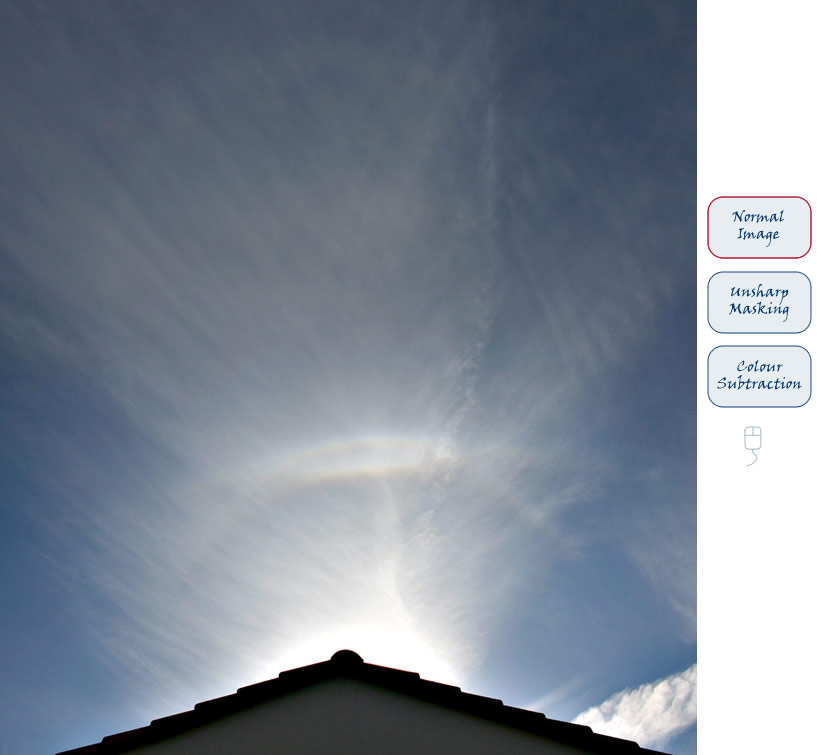 |
 |
| Helic & Lowitz Arcs
Cyrille Baudouin captured this unusual sight at La Bruffière in western France. High above the sun is a faint white oval halo, a rarely observed part of a helic (old name heliac) arc, Closer to the sun between the upper tangent and Parry arcs is another rarity - an upper Lowitz arc. Mouse over the buttons for enhancement options. Traditional unsharp masking can increase the visibility of all halos. Here it shows up the helic arc well. Unfortunately, unsharp masking can also introduce artifacts that can be mistaken for halos. Sharpened cloud streaks can also look like halos. Colour subtraction is a highly effective technique introduced by Nicolas Rossetto. Blue and red image channels are subtracted with the result that coloured halos stand out sharply. White halos like the helic ac, parhelic circle and 120° parhelia are rendered less visible as evidenced here. Images ©Cyrille Baudouin, shown with permission. |
 |
 |

| About - Submit | Optics Picture of the Day | Galleries | Previous | Next | Today |
| Another view. The colour subtraction enhancement reveals a trace of the upper Lowitz arc extending towards the right-hand parhelion. |

| The helic arc is formed by direct external reflection from slanted side face of Parry oriented crystals. There is a second route where internal reflection occurs from an upper side face. Surprisingly, Lowitz oriented plates also form a helic arc although it is weaker. The HaloSim ray tracing at right shows the helic arc climbing up from the horizon, passing through the sun and then looping high in the sky to descend again. The Lowitz arc in the ray tracing was made by Parry-Lowitz oriented crystals, i.e. columns with limited rotational positions around the Lowitz axis with most concentrated near the Parry position. In all likelihood most Lowitz arcs arise from plate-Lowitz or Parry-Lowitz oriented crystals rather than the traditional textbook orientations. |